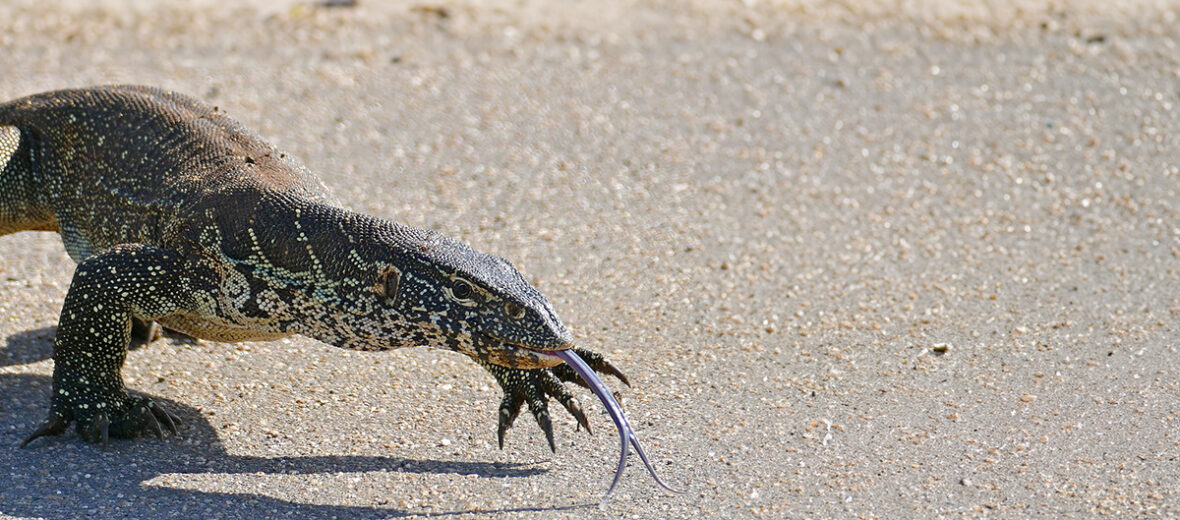
The Nile monitor, aka African small-grain lizard, calls much of subsaharan Africa its home. There are also invasive populations in North America. The invasive breeding populations are found in Lee, Miami-Dade, and Palm Beach counties, in Florida. Even though they face the threats of hunting, trapping, and pollution, these large and defensive lizards are abundant and listed as Least Concern by the IUCN. Their populations are stable.
First the Stats…
Scientific name: Varanus niloticus
Weight: Up to 33 lbs.
Length: Up to 8 feet, including their tail
Lifespan: Up to 20 years
Now on to the Facts!
1.) Other names given to these lizards are water leguaan, river leguaan, or guana.
2.) Among the list of other invasive species in Florida are agamas, Argentine black and white tegus, Madagascar giant day geckos, Burmese pythons, green iguanas, panther chameleons, and veiled chameleons, among many others.
3.) Nile monitors have been caught for food for at least a millennia by the Djenné-Djenno culture.
4.) The Nile monitor is considered a species complex. This is where a group of closely related organisms are so similar in appearance, as well as other features, that the boundaries between them are typically not clear.
5.) While being terrestrial, these lizards can climb well and are also skilled swimmers.
But wait, there’s more on the Nile monitor!
6.) These monitors are often kept in captivity, even though they are not only large and defensive, but resist taming.
7.) They have powerful jaws and sharp teeth that are capable of decent sized wounds. Their claws are also nothing to shirk, and can inflict painful scratches.
Did you know…?
Ronald Huff, 42, had his face, hands and internal organs devoured by 7, 6-foot long Nile monitor lizards he let roam free in his home.
8.) Females can lay upwards of 35+ eggs that hatch in up to 10 months.
9.) The Nile monitor is Africa’s longest lizard.
10.) While there are several venomous lizards, these monitors do not possess venom glands.
But wait, there’s still more on the Nile monitor!
11.) These lizards are diurnal (active during the day).
12.) It has been said that these monitors can hold their breath under water for up to an hour!
13.) Crabs, crayfish, mussels, snails, slugs, termites, caterpillars, beetles, spiders, grasshoppers, crickets, fish, frogs, toads, lizards, turtles, snakes, young crocodiles, birds and their eggs, mice, rats, and hares are all on the menu.
Now a Short Nile Monitor Video!
Be sure to share & comment below! Also, check out the Critter Science YouTube channel. Videos added regularly!
Want to suggest a critter for me to write about? Let me know here.
Some source material acquired from: Wikipedia & IUCN
Photo credit: Bernard Dupont



